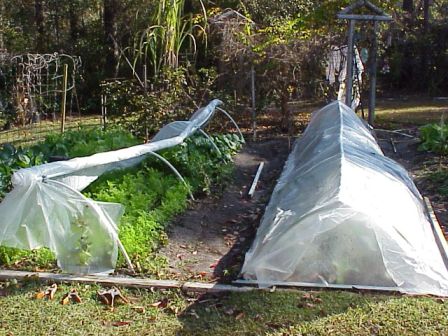
by Matthew Orwat | Dec 2, 2016
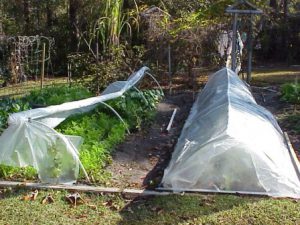 In Northwest Florida gardeners are fortunate since it is possible to grow ample supplies of vegetables throughout the winter months. While the Florida Panhandle does receive the occasional hard freeze, many winter vegetables such as radish, onion, lettuce, carrot and the various cole crops, can easily withstand mild freezes.
In Northwest Florida gardeners are fortunate since it is possible to grow ample supplies of vegetables throughout the winter months. While the Florida Panhandle does receive the occasional hard freeze, many winter vegetables such as radish, onion, lettuce, carrot and the various cole crops, can easily withstand mild freezes.
When a hard freeze occurs, defined by temperatures that dip below 28°F for over five hours, it is important to be prepared with frost cloth, cotton sheets or other suitable material. Frost cloth is a good option since it protects plants from morning frosts while still allowing for a little air transfer. It is a synthetic fabric which offers 4-8 degrees of protection and is available through many online greenhouse and agricultural suppliers. Old cotton sheets, often found at thrift stores for very low cost, offer good protection from frost damage. With both of these products, ensure that the coverage extends completely to ground level with no gaps, to not allow cold air to infiltrate from the bottom.
While these methods will not provide enough protection to allow summer vegetables to be grown during winter months, it can be beneficial in reducing frost and freeze damage to winter vegetable crop.
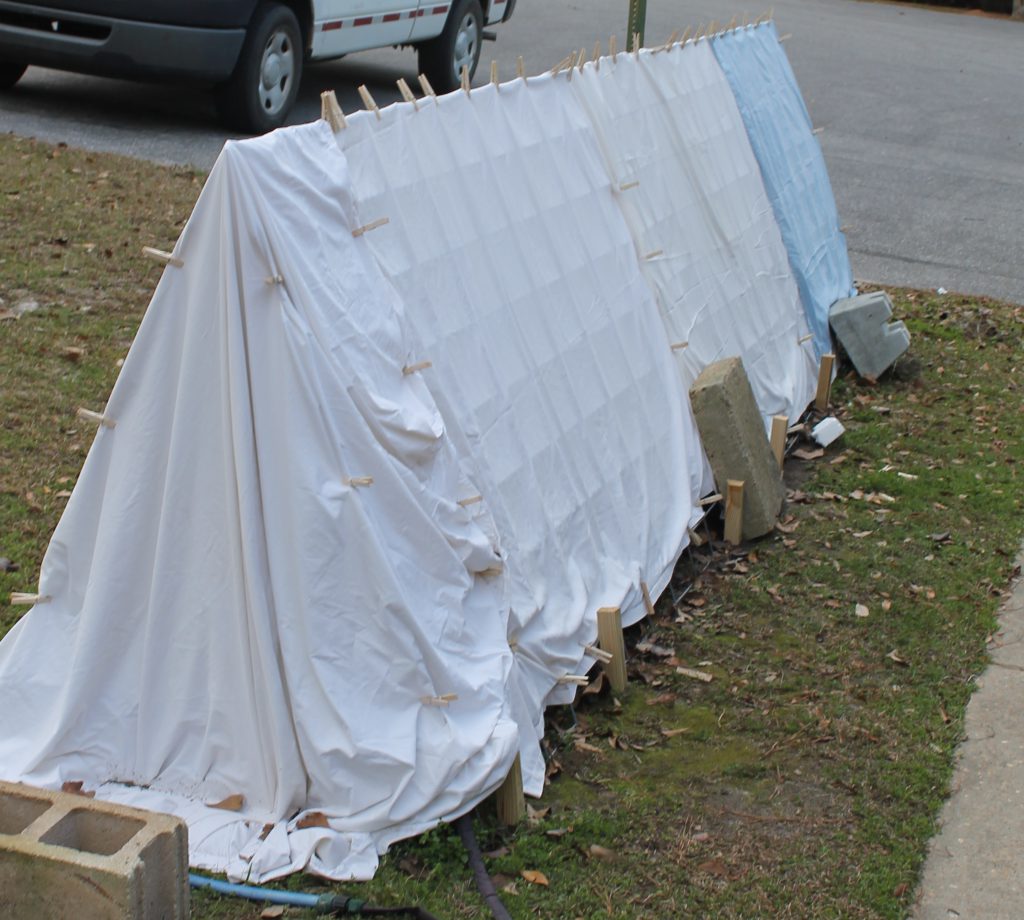
Additional Tips:
Do not use plastic covers, since they radiate cold and heat more readily. Even if they protect the plants from the cold, they can quickly trap heat in when the sun rises and “cook” the plants.
Additionally, it is important to keep vegetables well-watered at all times, but this is especially true during frost events since moist soil holds more heat. Healthy, appropriately watered plants withstand cold stress at greater rates.
Happy gardening over the Holiday Season!
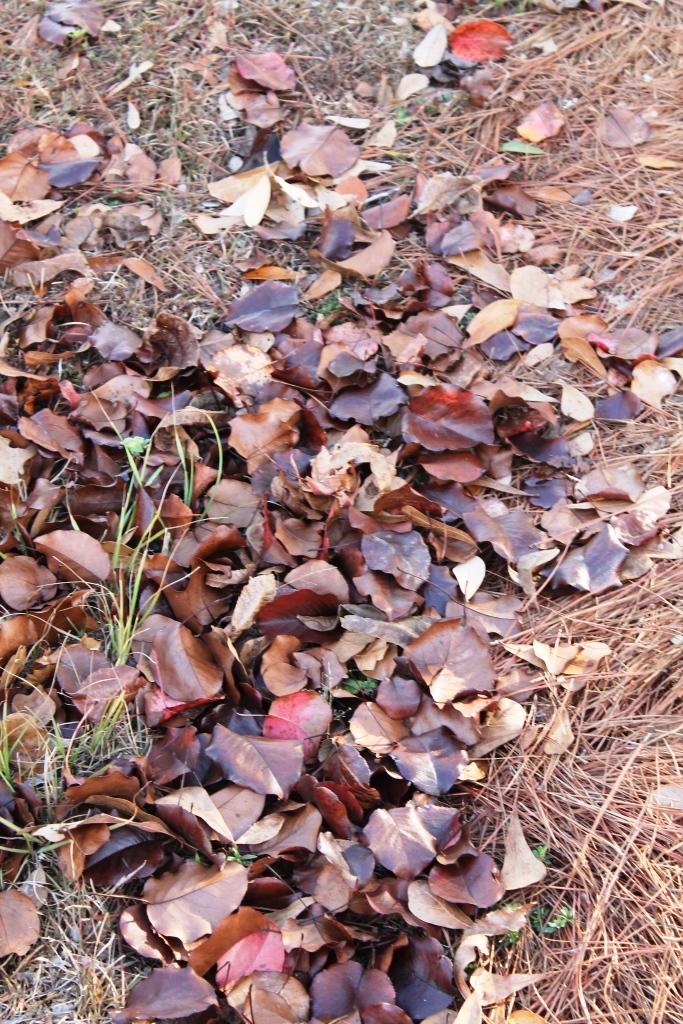
by Larry Williams | Dec 2, 2016
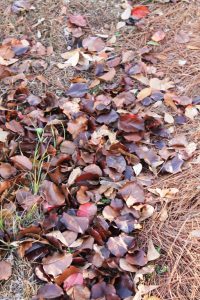 Billions of leaves blanket the fall landscape and are bagged by hundreds of homeowners to be placed curbside for local trash pick-up.
Billions of leaves blanket the fall landscape and are bagged by hundreds of homeowners to be placed curbside for local trash pick-up.
Many of these leaves could be easily turned into valuable mulch or compost.
Why do all those fall leaves end up in bags to be discarded?
It’s probably because the homeowner is overwhelmed by the volume. For instance, one resident reported raking more than 100 large bags of leaves from his half-acre property. One large oak tree can contain over 250,000 leaves!
Bagged and discarded leaves could become a quality mulch or could be composted.
Homeowners have tools for reducing 100 bags of leaves to 10 in their own backyards.
Shredding and composting can reduce leaf volume by 90 percent and provides a manageable quantity of valuable mulch and an excellent organic source for composting and converting into rich humus to improve garden soil.
Shredded leaves stay seated better on the landscape than whole leaves. They also do a better job of holding moisture in the soil and don’t mat down like whole leaves.
But how do you shred leaves if you don’t have a costly leaf shredder?
All you need is a lawn mower, a little extra time and a concern for the environment. Just put the leaves on the lawn in rows around three feet wide and two feet deep.
Then, with the lawn mower at the highest wheel setting, run over the pile. If the mower has a bag attachment, collecting shredded leaves is a neat and easy task.
Without a bag, the easiest way to collect them is to put a 9-by-12-foot drop cloth parallel to the row of leaves. Then, by running the mower in one direction so the leaves are discharged onto the cloth, cleanup is easier.
Throw the shredded leaves in the compost pile to cut the volume by another 50 percent.
Shredded leaves will shrink within a week and compost faster than whole leaves.
To compost dry leaves, add water, a little garden soil and a cup of garden fertilizer.
For more information on gardening and landscaping, contact the UF/IFAS Extension Office in your County.

 In Northwest Florida gardeners are fortunate since it is possible to grow ample supplies of vegetables throughout the winter months. While the Florida Panhandle does receive the occasional hard freeze, many winter vegetables such as radish, onion, lettuce, carrot and the various cole crops, can easily withstand mild freezes.
In Northwest Florida gardeners are fortunate since it is possible to grow ample supplies of vegetables throughout the winter months. While the Florida Panhandle does receive the occasional hard freeze, many winter vegetables such as radish, onion, lettuce, carrot and the various cole crops, can easily withstand mild freezes.


